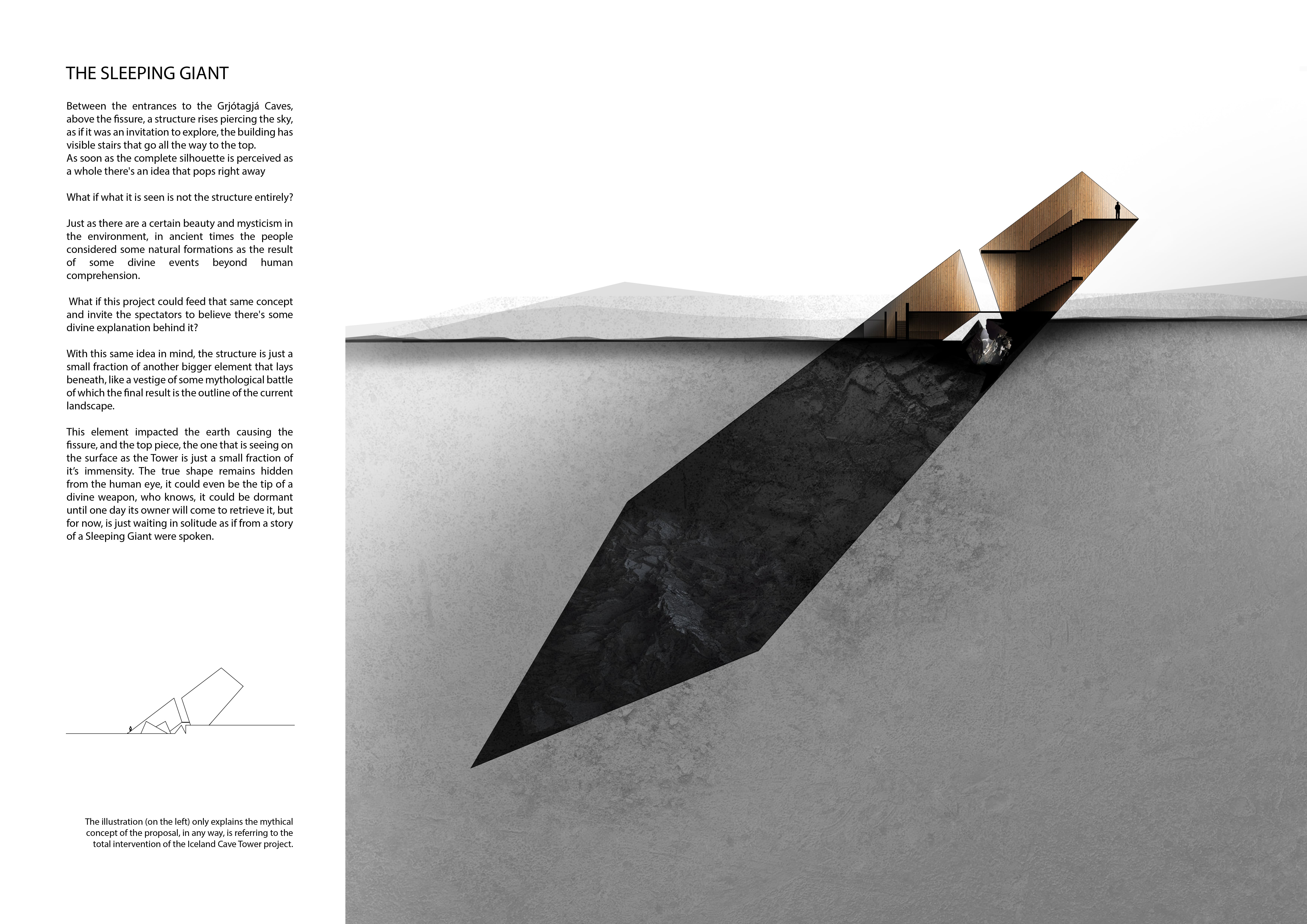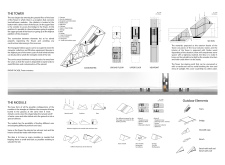5 key facts about this project
The Iceland Cave Tower is located in a unique geological area between the Grjótagjá Caves in Iceland. The design aims to enhance visitor interaction while encouraging exploration of the natural thermal pools and fissures below. The overall concept focuses on creating a connection between the architecture and its striking environment, inviting people to engage with the landscape.
Architectural Concept
The design prioritizes exploration and encourages interaction through well-planned pathways. These pathways guide visitors across the site and help them appreciate the rugged terrain and thermal features in the area. The tower serves as a central point, allowing visitors to take in expansive views of the dramatic geological formations that characterize the landscape.
The Tower
The tower stands prominently above the ground, symbolizing a link between the North American and Eurasian tectonic plates. Its height provides a vantage point for visitors to engage with the surrounding natural beauty. As people ascend, they can observe the unique topography and better understand the geological processes at play in the region.
Functional Areas
Various functional spaces are integrated into the design to support the needs of visitors while ensuring minimal impact on the environment. Facilities such as resting areas and bathrooms are included, maintaining comfort and accessibility. This thoughtful inclusion enhances the visitor experience without overwhelming the natural setting.
Material Considerations
The materials chosen for this design improve its connection with the landscape. The use of volcanic rock for the tower's exterior reflects the local geology, providing a visual link to the surroundings. Interior spaces are proposed to feature timber, creating a warm and inviting atmosphere. This combination of materials helps create an environment that resonates with the natural world.
The design culminates in a thoughtful blend of architecture and landscape, where every element contributes to enhancing the visitor experience while respecting the unique geological and cultural narratives of the site.






















































